Solar Cycle 25: The Overachiever
Monday, 11 April 2022 17:17 UTC
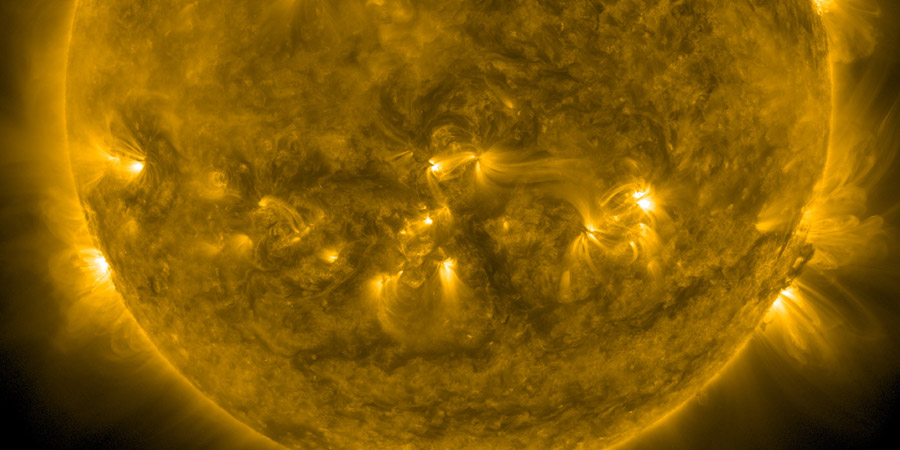
Today we have a really special news item for you! We have a guest post made by Christian Harris from Space Weather Trackers. Christian is a friend of the website and has some serious big brain knowledge about everything space weather related. I am sure many of you have heard of him before and we reached out to him to shed some light on the current Solar Cycle 25 and how it stacks up to previous Solar Cycles. Please read his article below and gain some fascinating insights on how SC25 is developing. It is well worth the read! If you are interested in Christian's work be sure to follow him on Facebook and follow his Space Weather Trackers Facebook page
X-class solar flares, strong geomagnetic storming, CME after CME; all the telltale signs of our star during the midst of its peak in activity, generally known as solar maximum. A few years back we had finally entered the beginning of Solar Cycle 25, a cycle that NOAA initially forecasted to be similar in strength to our previous cycle, which wasn’t terrific in comparison to the cycles before it in terms of maximum sunspot numbers. So, this begs the question, “Why has solar and geomagnetic activity been so high the last few months?”
NOAA initially gave the forecast for Solar Cycle 25 (SC25) in April of 2019, stating a start time of late 2019 to early 2020, and a peak Sunspot Number (SSN) of 117 ± 23, peaking sometime in the middle of 2025. Compared with the peak of SC24, already a weak cycle in the grand scheme, it’s expected to be similar in strength.
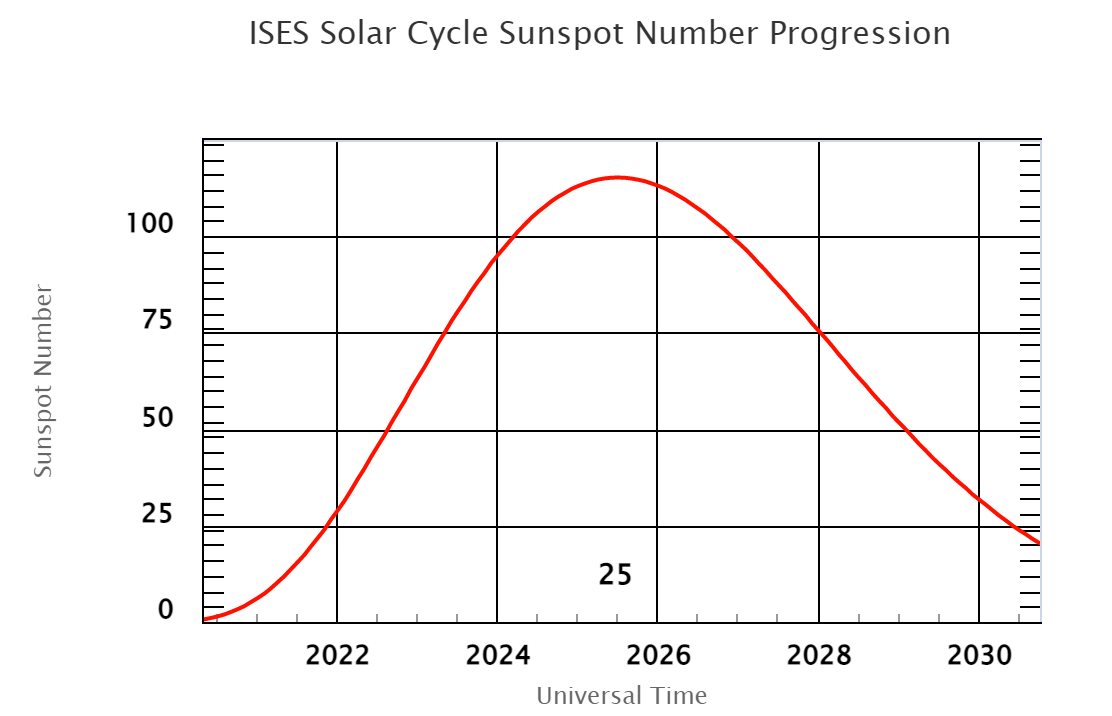
In December of 2019, we officially crossed over into SC25 as new sunspots, with opposite leading polarities of the previous cycle’s, started forming more consistently at higher latitudes.
As the months went by, the surprises began, and the slow, steady increase we thought we’d see gave way to a rapidly increasing SSN. As early as October of 2020, the SSN was already nearly four times higher than forecasted, and it didn’t stop there. This acceleration continued until we started seeing numerous and potent sunspots, M and X class flares, and plenty of aurora for middle and upper latitudes. So why the sudden rapid and deviating levels of activity, only a few years after we officially entered SC25? Let’s talk about the numbers and compare them to where SC24 was at this point in its timeline.
We currently have smoothed values for this cycle up to September of 2021, which stand at a value of 40. With a forecasted smoothed SSN for the same month of 19.7, its clear the current progress is far ahead of what was initially expected. In the next photo, I’ve superimposed an image of SC25’s smoothed SSNs on top of SC24’s for the same timeframe, with NOAA’s forecast to detail the drastic differences.
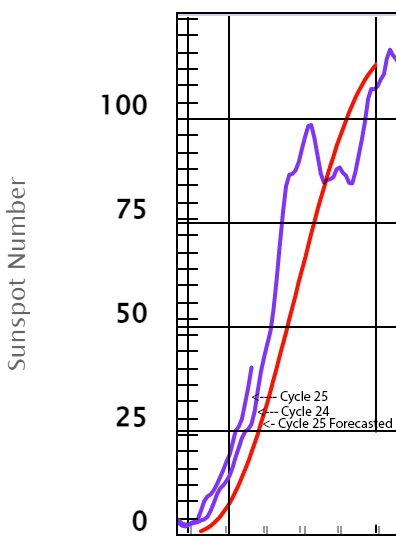
You can see the slope for SC25’s line is much higher than what SC24’s was at this point, and drastically different from NOAA’s forecast. So, it’s clear that Cycle 25 is blowing away expectations, but another question looms: “Does this imply the cycle will peak sooner, have a stronger peak, or something else?” One can only tell with time, but there are a few possibilities that might help track things a bit more accurately from this point on, such as in the next photo.
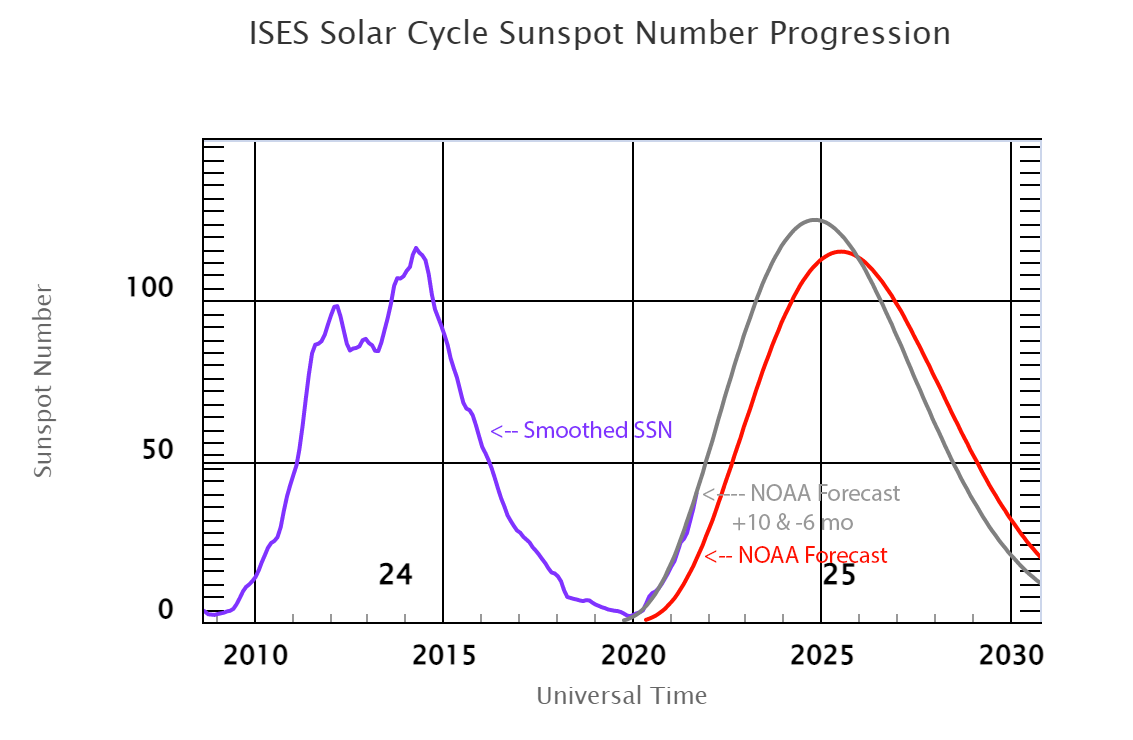
NOAA’s Space Weather Prediction Center (SWPC) website on the progress of the solar cycle has some handy features, including the ability to test out numbers under different assumptions, such as if the peak of the cycle came 6 months earlier/later, or came at the forecasted time but had a higher/lower SSN. If you look at the scenario in which the cycle peak came six months earlier than forecasted, and had a higher value (+10), you’ll notice that the current smoothed SSN line is almost completely hidden behind the new scenario, implying a very strong agreement in terms of the SSNs, as well as timing. This also brings the forecasted smoothed SSN to be about 127, putting it slightly over SC24’s strongest peak. This is a good sign for implying that this cycle will be a bit stronger than what we had for SC24. However, there’s another theory running out there that could be a game-changer.
In June of 2020, McIntosh et al. put out a paper describing a pattern they found in the sun’s magnetic cycle when considering the exact time frame the toroidal magnetic fields of a specific cycle ended, noted as a “termination event,” to the time that the following cycle’s fields ended. A relationship was found that suggested an inverse correlation between the time elapsed between termination events and the severity of the following cycle. For example, a shorter time between cycle 1’s and cycle 2’s termination event, meant a higher sunspot number in cycle 3. When using this relationship, McIntosh and his team were able to recreate, with surprising accuracy, all the previous solar cycles’ peak sunspot numbers, including the Dalton minimum from the late 1700s-mid-1800s where hardly any sunspots showed up at all. The team then made a drastically different forecast from the rest: SC25 would have a peak SSN between 204 and 254! As a reference, these numbers are like what we saw in SC21 & SC22, which had several big events like the Quebec power outage of 1989, which was also a major aurora event for the world. This forecast wasn’t foolproof however and assumed that SC24’s termination event, which had not yet occurred, would occur in May of 2020.
Months after the paper came out, Cycle 24’s termination was detected in December of 2021, increasing the time frame between termination events by 19 months—which then decreased the forecasted SSN from 204-254 to 170-210! This now puts the forecast for SC25 to be on par with SC23, which gave us the famous Halloween storms of 2003, where aurora was seen for two nights in a row across the entire world.
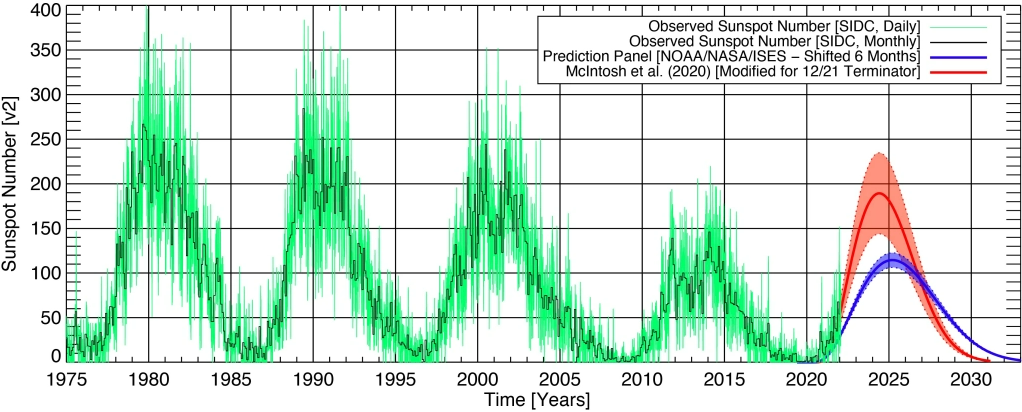
Will SC25 continue to defy current predictions of a weaker cycle and take us out of what appears to be an impending grand minimum, or is it just a quick rush into what will be a lackluster cycle like its predecessor? Either way, I’m just hoping for more aurora.
Thank you for reading this article! Did you have any trouble with the technical terms used in this article? Our help section is the place to be where you can find in-depth articles, a FAQ and a list with common abbreviations. Still puzzled? Just post on our forum where we will help you the best we can!
Latest news
Latest forum messages
Support SpaceWeatherLive.com!
A lot of people come to SpaceWeatherLive to follow the Sun's activity or if there is aurora to be seen, but with more traffic comes higher server costs. Consider a donation if you enjoy SpaceWeatherLive so we can keep the website online!

Space weather facts
| Last X-flare | 2025/03/28 | X1.1 |
| Last M-flare | 2025/04/22 | M1.3 |
| Last geomagnetic storm | 2025/04/21 | Kp5+ (G1) |
| Spotless days | |
|---|---|
| Last spotless day | 2022/06/08 |
| Monthly mean Sunspot Number | |
|---|---|
| March 2025 | 134.2 -20.4 |
| April 2025 | 122.8 -11.4 |
| Last 30 days | 117.7 -15.6 |


